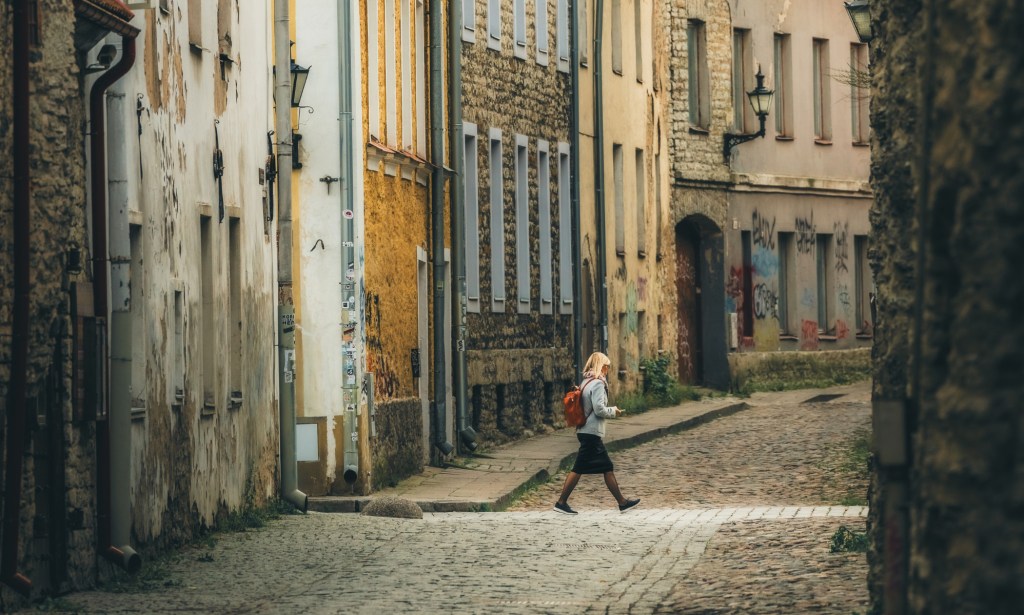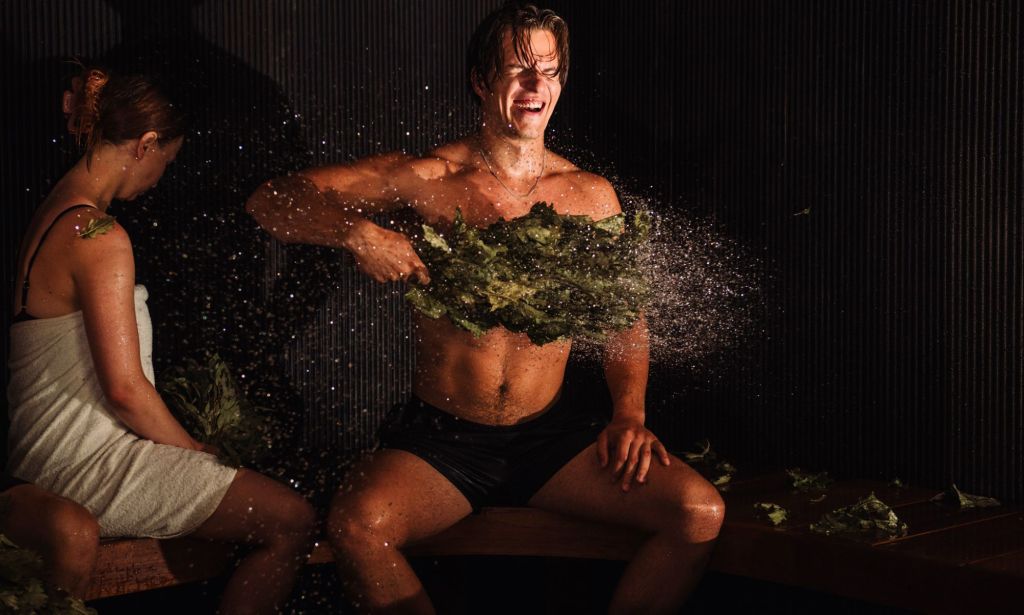Why Estonia is fast-becoming a Baltic LGBTQ+ hotspot – complete with marriage equality

Estonia is the perfect destination for a queer holiday. (Tartu Pride 2024)
When I first told people that I would be travelling to Estonia, the responses it elicited shocked me.
While excited for me, family members were quick to say “stay safe,” while friends – and those listening in to my conversations – made comments ranging from bewildering to downright xenophobic. I recall one stranger warning me to “watch my tyres”, a comment that was unjustifiable even if Estonia was a homophobic place – which it isn’t.
I didn’t know much about the Baltic state prior to my trip – its complicated history is muddied by the European superpower that neighbours it – but what I discovered travelling from the vast, colourful cityscape of Tallinn to the quaint serenity of Tartu’s Emajõgi river, was a place as beautiful as its history is tragic.
Estonia, like its neighbours Latvia and Lithuania, has fluttered in and out of independence and state puppetry for centuries. Through it all, the proud Estonian spirit has endured.
Gaining its independence from the Soviet Union just months before the USSR collapsed at the end of 1991, Estonia has flourished into a captivating amalgamation of cultures that, mixed with a dash of defiant national pride, has morphed it into the budding progressive country we know today.
Sure, it still has its issues – conversion therapy has yet to be banned, and accessing gender-affirming healthcare is still a prevalent issue – but its recent decision to legalise equal marriage proves that the country has broken through the oppressive rhetoric of the Russian bear that once held the key to its cell, and embraced change with the rest of Europe.
Where to stay and what to do in Tallinn

My journey took me through the heart of that embrace for change, from the city of Tallinn to its cultural centre-point, Tartu. While both cities feel connected through their beautiful architecture and wonderfully Scandinavian-esque skyline, their respective energies allow for two diverse and unique experiences.
Tallinn, very much the official and political capital, has in its blood a drop of every Estonian oppressor, making it an awe-inspiring, real-time display of the country’s history. Walking through the city centre is like stumbling into an open-air museum, with the Riigikogu parliamentary building, a 19th-century Orthodox cathedral where photography is forbidden, and the medieval defensive walls of the capital next door to each other.
All of this is captured in the sub-district of Vanalinn, a fantastical old town marked as a World Heritage Site which is home to a variety of shops, bars and restaurants.
If you get the chance, stop by Botaanik on the outskirts of the town, an LGBTQ- run bar with a variety of delicious cocktails on offer. Make a booking if you can, because, being generous, the table space could be defined as “cosy.”

Walking through Vanalinn is like transporting yourself to an alternate universe in which medieval serfs had good plumbing, helped by the heavy presence of live-action role-players who stroll the town’s cobblestone streets wearing Middle-Age attire.
While Tallinn provides authenticity, it doesn’t skimp on luxury. The Nunne Boutique Hotel and Spa, my first stopping off point, offers a luxurious blend of reverence and historical elegance. Its mix of rustic, often cobblestoned, architecture, with sprinkles of modernity in its amenities, is immersive and welcoming.
A typical night will set you back anywhere between £164 ($220) and £454 ($600). All the rooms include breakfast, while others offer access to the spa, which is open every day between 9am and 9pm.
Guests are required to give staff an hour’s notice before accessing the spa, which can make planning quick trips a trial and unfortunately meant I wasn’t able to check it out.
Exploring Tartu, Estonia’s second city
Tartu is aptly described as Estonia’s “heart and soul.” Approaching the Raekoja plats (the town square), you’re met with an extraordinary promenade at the foot of the city government building, showcasing just a few of the eateries, including the Kampus, a cosy bar and restaurant serving a variety of gourmet meals, including kataifi shrimps, beef tartare, and a variety of soft cheeses.
Avenues darting to and from the promenade lead you to captivating streets filled to the brim with soul and energy, not least because of the magnificent street art which drenches Tartu with a kind of larger-than-life quality.
No two streets are the same and there is always something on offer, including the restaurant Kolm Tilli, a hidden little grill which serves street food to die for.
Less than a few steps from Raekoja plats is the Lydia Hotel 4 Superior, a four-star hotel and spa with modern rooms that serve as a place to temporarily rest your feet before embarking on your next Tartu adventure. Its spa lounge, which this time I thankfully got to try, is cosy and serene, sporting several saunas and a heated pool.
Estonia’s love affair with the sauna

Saunas are an integral part of Estonia’s culture. For some, they serve as a uniquely introspective place to collect one’s thoughts. For others, they are an excuse to get together with friends over a few glasses of wine. My time at Iglupark – a mini-resort on the coast of Tallinn – showcases this perfectly.
Inside the unique Igloo saunas, the “sauna masters” show the rituals of entering, exiting and meditating. Estonian saunas are unlike anything I have experienced, it’s pure introspection and actualisation as your emotions intertwine with the sweltering heat that envelopes you with every waft of the hand fan used to raise the temperature.
While smacking tree branches against your back and splashing cold water on scorching bodies to the tunes of Estonian folk songs is certainly profoundly cathartic, small groups of locals who had rented saunas next door instead relaxed with a few beers and pop music – a sign that the ever-present sauna tradition of togetherness has survived as other meditative traditions might have waned.
What struck me while at Iglupark was the sheer disconnect between the luxurious space we were relaxing in and its surroundings. The park is next door to Port Noblessner, a dockyard filled with warships overlooking Tallinn Bay. Whether functional or not, the contrast was a stark reminder of the rising tension at the Russo-Estonian border following Vladimir Putin’s invasion of Ukraine.

Estonian patriotism emanates through the very ground you walk on. Even while cruising across the Emajõgi on the Jõmmu barge – a feat of Estonian craftsmanship – locals, after waving at our ship, were heard on the man-made beaches yelling calls of Estonian pride before diving into the river.
Patriotism means something different here, it’s an act of defiance rather than a declaration of superiority.
This is no better represented than at the Estonian National Museum, an awe-inspiring centre showcasing the country’s history in a building crafted from an old Soviet runway. In the heart of its exhibits, snippets of bygone days are documented through archive footage played on a constant loop. There, amid the echoes of its ancestors sharing messages of resistance through the cracks of its wavy woven hallways, I learnt that even its flag was designed as an act of defiance.
Near the end of my time in Estonia, everything I had discovered led me no closer to understanding why I had received such a concerned reaction to announcing my travel plans. Was it because it was a former Soviet Socialist republic? Is there a misinformed notion that Russia’s influence still permeates today?
Despite everything the Estonian people have been through, their identity has flourished through the cracks of their oppressors.
I believe its embrace of same-sex marriage is the recognition that, like the LGBTQ+ community, Estonia has stayed true to itself.
Share your thoughts! Let us know in the comments below, and remember to keep the conversation respectful.
How did this story make you feel?

